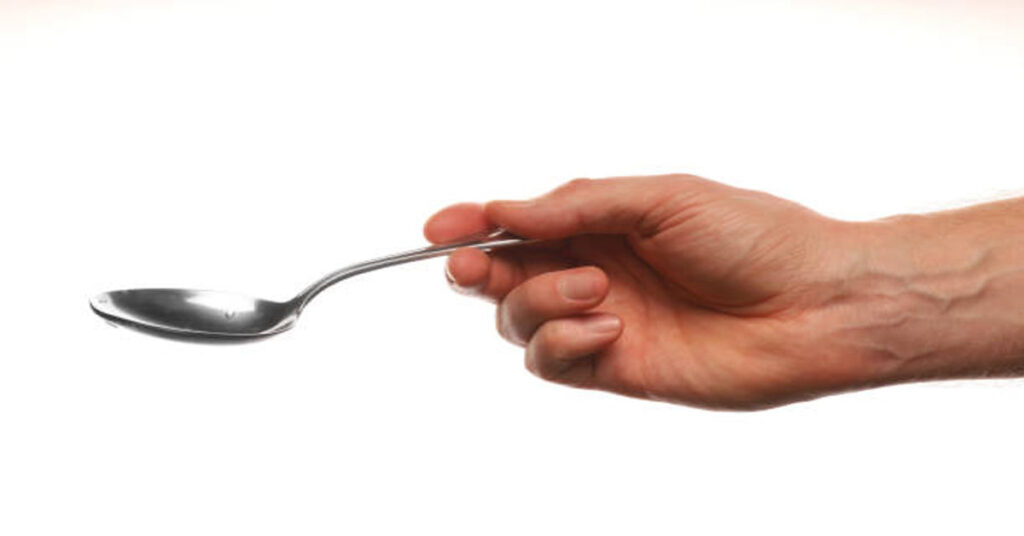A spoon is one of the simplest yet most ingenious tools ever created by humankind. Its design appears effortless — a small bowl-like head attached to a handle — yet its usefulness transcends time, culture, and purpose. The spoon represents not just a utensil but an enduring symbol of nourishment, craftsmanship, and civilization itself. From prehistoric bone scoops to modern titanium sporks, the spoon has evolved alongside humanity’s relationship with food, medicine, art, and even ritual.
In this detailed exploration of the spoon, we will trace its origins, evolution, materials, craftsmanship, symbolic meaning, and modern innovation. You’ll also find informative tables comparing spoon types and materials, offering a comprehensive view of this humble yet remarkable object.
1. The Historical Evolution of the Spoon
The spoon’s story begins thousands of years ago, long before the invention of forks or knives in their current form. Early humans needed simple tools to scoop liquids, grains, or crushed foods. The first spoons were likely shaped from natural materials — shells, bones, wood, or stones — chosen for their concave shapes.
1.1 Ancient Origins
Archaeological discoveries show that spoons existed as early as 1000 BCE. Ancient Egyptians carved spoons from wood, ivory, and precious metals. These were not only eating tools but also ceremonial objects, often decorated with intricate patterns, animal figures, or hieroglyphics symbolizing life and fertility.
In ancient Greece and Rome, spoons were common household items made of bronze and silver. Roman spoons, known as cochlearia, had pointed handles used to pick shellfish or pierce fruit. In China, spoons were integral to dining culture, often crafted from porcelain or jade, reflecting the aesthetic values of the dynasty in power.
1.2 The Middle Ages and Beyond
During the Middle Ages, spoons were personal possessions. People carried their own spoons to feasts, often made of wood, pewter, or silver. The wealthy used ornate spoons engraved with family crests or religious symbols. By the 17th century, spoons became part of standard cutlery sets, with factories in England and France producing them for widespread domestic use.
The Industrial Revolution introduced machine production, making spoons accessible to all social classes. By the 20th century, mass production techniques and new materials like stainless steel and plastic transformed the spoon into a global household essential.
2. Anatomy of a Spoon
Though simple in appearance, a spoon’s design reflects careful ergonomic and functional engineering. Each part has a specific purpose that enhances comfort, control, and usability.
| Part | Description | Function |
|---|---|---|
| Bowl | The concave end of the spoon | Holds liquids or semi-solid food |
| Handle | The elongated grip | Provides leverage and control |
| Neck | The connecting section | Balances flexibility and strength |
| Tip | The front edge of the bowl | Allows scooping or tasting precision |
| Back | The convex outer curve | Affects flow of food when lifted |
Modern spoon designs are optimized for comfort and efficiency, ensuring balance between bowl depth, curvature, and handle length.
3. Materials Used in Spoon Manufacturing
Over time, the materials used to make spoons have reflected both technological progress and cultural preferences. Different materials influence a spoon’s weight, durability, aesthetics, and cost.
3.1 Common Materials and Their Characteristics
| Material | Characteristics | Common Uses |
|---|---|---|
| Wood | Lightweight, natural, biodegradable | Cooking spoons, traditional dining |
| Silver | Elegant, antibacterial, tarnishes over time | Luxury or ceremonial spoons |
| Stainless Steel | Durable, rust-resistant, modern | Everyday dining and professional kitchens |
| Plastic | Inexpensive, disposable, versatile | Single-use spoons, picnics |
| Bamboo | Eco-friendly, renewable | Sustainable alternatives |
| Titanium | Lightweight yet strong, corrosion-resistant | Outdoor or military-grade spoons |
| Porcelain/Ceramic | Heat-resistant, decorative | Asian dining, desserts |
| Bone or Ivory (historic) | Artistic, rare today | Ancient and antique spoons |
Each material tells a story — from the handcrafted artistry of wooden spoons to the sleek precision of industrial stainless steel.
4. Types of Spoons and Their Purposes
There are dozens of spoon varieties designed for specific tasks. While all share the same fundamental shape, each type has unique proportions suited to its intended use.
Table: Common Types of Spoons
| Type | Description | Typical Use |
|---|---|---|
| Teaspoon | Small, versatile spoon | Stirring tea or coffee, measuring ingredients |
| Tablespoon | Larger than teaspoon | Serving or eating soups and cereals |
| Dessert Spoon | Slightly smaller than tablespoon | Eating desserts |
| Soup Spoon | Round-bowled and deep | Consuming soups and broths |
| Serving Spoon | Large, sturdy handle | Serving dishes and salads |
| Slotted Spoon | Holes in bowl | Draining liquids from foods |
| Measuring Spoon | Standardized size | Baking and cooking measurements |
| Baby Spoon | Small, soft edges | Feeding infants |
| Iced Tea Spoon | Long handle | Stirring tall glasses of beverages |
| Ladle | Deep, cup-like bowl | Serving stews or punch |
| Spork | Hybrid spoon-fork | Camping, fast food packaging |
| Salt Spoon | Miniature decorative spoon | Scooping table salt elegantly |
Each type has emerged from specific dining needs and cultural adaptations, emphasizing how culinary practices influence utensil design.
5. Spoon Manufacturing Process
Modern spoon manufacturing combines precision engineering, metallurgy, and polishing craftsmanship. Though processes vary depending on material, the fundamental stages are similar.
Step-by-Step Process for Metal Spoons
- Design and Molding – Designers create CAD models defining spoon shape, weight, and ergonomics.
- Blanking – Metal sheets are cut into spoon-sized blanks using stamping machines.
- Forming – Blanks are pressed into shape with dies, creating the bowl and handle contours.
- Trimming – Excess metal is removed to refine edges.
- Polishing and Finishing – Automated and manual polishing smooths surfaces for shine and hygiene.
- Engraving or Branding – Logos or designs are etched or laser-marked.
- Quality Testing – Checks for balance, finish, and durability before packaging.
Plastic spoons, by contrast, are made through injection molding, where melted plastic is poured into pre-shaped molds and cooled rapidly.
6. The Spoon in Culture and Symbolism
Beyond its function, the spoon has deep cultural and symbolic meanings across civilizations.
- Hospitality and Generosity: In many societies, offering food with a spoon represents care and sharing.
- Ceremonial Use: Silver christening spoons are traditional gifts in Western cultures, symbolizing prosperity (“born with a silver spoon”).
- Art and Status: Ornate spoons reflect social status — from royal silverware to handcrafted artisan pieces.
- Medicine and Healing: In ancient times, spoons were tools for measuring and mixing medicinal concoctions.
- Spiritual Symbolism: In some traditions, spoons are associated with nurturing and divine sustenance.
Spoons, therefore, are more than just eating utensils — they embody the human connection between sustenance, emotion, and ritual.
7. Regional and Cultural Variations
Every culture has shaped the spoon in its own image, adapting to local cuisines and customs.
| Region | Typical Material | Unique Feature | Common Use |
|---|---|---|---|
| Asia (China, Japan, Korea) | Porcelain or lacquered wood | Deep, short spoons | Soups, rice dishes |
| Europe | Silver or stainless steel | Decorative engraving | Formal dining |
| Africa | Wood or horn | Carved handles | Communal meals |
| Middle East | Brass or silver | Ornamental etching | Desserts, tea serving |
| North America | Stainless steel or plastic | Standardized design | Everyday meals |
| South America | Wood or metal | Folk-inspired carving | Traditional stews |
This variety highlights how spoons serve as mirrors of culinary identity, evolving with dietary habits and artistry.
8. Hygiene, Maintenance, and Longevity
Proper care extends a spoon’s life and preserves its appearance.
8.1 Cleaning Methods
- Stainless Steel: Wash with warm soapy water; dry immediately to prevent water stains.
- Silver: Use anti-tarnish polish and store in soft cloth pouches.
- Wood: Avoid soaking; rub with mineral oil to prevent cracking.
- Plastic: Use mild detergent; avoid high-heat washing.
8.2 Sanitization
In public dining and healthcare, spoons undergo high-temperature sterilization or UV disinfection to maintain hygiene standards.
8.3 Sustainability
With growing environmental awareness, the demand for biodegradable spoons made of bamboo, starch-based polymers, or edible materials is increasing — combining utility with eco-responsibility.
9. The Spoon in Modern Innovation
Today, spoons continue to evolve through technology and design innovation.
- Smart Spoons: Devices with sensors to monitor diet, portion size, or tremor reduction for Parkinson’s patients.
- 3D-Printed Spoons: Allow custom ergonomic or artistic designs.
- Edible Spoons: Made from grains like rice or wheat to reduce plastic waste.
- Lightweight Alloy Spoons: Used in space missions and extreme outdoor environments.
- Artistic Reuse: Old spoons transformed into jewelry or sculpture — blending function with art.
These innovations demonstrate how even the simplest tool can inspire creativity and adapt to modern challenges.
10. Economic and Environmental Impact
The spoon industry is vast, employing thousands worldwide in metalworking, design, packaging, and distribution. Stainless steel remains dominant, but plastic spoons have raised environmental concerns.
Comparison: Metal vs Plastic Spoons
| Feature | Metal (Stainless Steel) | Plastic |
|---|---|---|
| Durability | Long-lasting | Disposable |
| Cost | Higher initial, lower lifetime | Very cheap per unit |
| Recyclability | Fully recyclable | Often non-recyclable |
| Environmental Impact | Minimal with reuse | High pollution risk |
| Aesthetics | Elegant, reusable | Basic, utilitarian |
Many companies now invest in eco-friendly alternatives, such as cornstarch spoons, encouraging a shift toward sustainable dining habits.
11. The Spoon as a Symbol of Care and Connection
Few objects accompany human life from infancy to old age as intimately as the spoon. It feeds babies their first meal, serves comfort food in sickness, and remains present in daily rituals. In literature and metaphor, spoons often represent comfort, gentleness, and continuity — reminding us that small acts, like feeding or sharing, carry profound emotional meaning.
Even modern psychology recognizes the term “spoon theory” (though separate from the utensil itself) as a metaphor for limited energy and compassion, reflecting how deeply the idea of the spoon resonates with human empathy.
Conclusion
From prehistoric shells to futuristic smart utensils, the spoon remains an enduring testament to human ingenuity and adaptability. Its design has changed little because it was nearly perfect from the start — a union of form and function that transcends time.
Whether carved from wood, forged in silver, or printed from bioplastics, spoons continue to serve as symbols of sustenance, culture, and human connection. The next time you hold a spoon, remember: you are holding a piece of history — one shaped not only by hands, but by centuries of civilization, care, and creativity.
FAQs
1. What is the origin of the spoon?
The spoon originated in prehistoric times when humans used shells, stones, and bones to scoop food. Over centuries, it evolved into crafted tools made of wood, bronze, silver, and later, stainless steel.
2. Why are spoons designed with a curved bowl?
The curved bowl allows efficient scooping and holding of liquids or soft foods. It prevents spillage and directs food easily to the mouth, reflecting ergonomic design.
3. What is the most common spoon material today?
Stainless steel is the most popular because it is durable, hygienic, rust-resistant, and suitable for both home and professional use.
4. How are spoons made in modern factories?
Spoons are made through metal stamping, pressing, and polishing processes using automated machinery. Designs are shaped from metal sheets and finished for smoothness and shine.
5. Are eco-friendly spoons available today?
Yes, many companies produce biodegradable or edible spoons made from bamboo, cornstarch, or grains, offering a sustainable alternative to plastic utensils.







